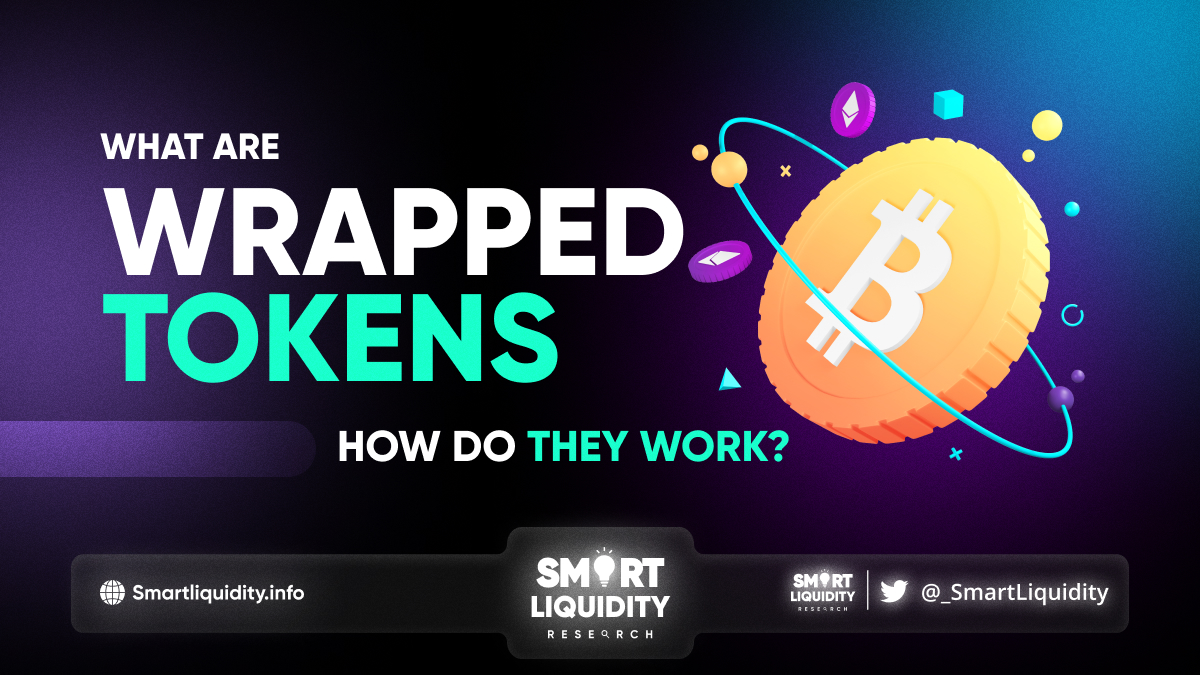What Are Wrapped Tokens & How Do They Work?


Bitcoin trading on the Ethereum network requires third-party software that isn’t available on the platform’s default client, much like playing a PC game on a Mac. Instead, it is made very easy on blockchains by a feature known as a wrapped token. However, what exactly is a wrapped token, and how does it function?
What Is a Wrapped Token?
The valuation of a native asset on one blockchain may be transferred to another blockchain using a wrapped token. Wrapped Bitcoin is one of the most famous examples of a wrapped token (WBTC). The value of one WBTC is fixed at the same level as that of one Bitcoin (BTC). Unlike Bitcoin, however, WBTC may be obtained as either a TRC-20 token or an ERC-20. Making it usable and tradable on the Tron and Ethereum networks.
Strange as it may seem, even if ERC-20 tokens are produced on the Ethereum network, ETH is not compatible since it was designed first. Therefore, like Bitcoin, Ether requires wrapping to meet the specifications of other ERC-20 tokens. It creates a tokenized form of ETH on the Ethereum network.
Wrapped tokens may be thought of as analogous to stablecoins like USDT, which track the American dollar’s value. Each USDT is valued at $1, just as each WBTC is valued at $1 per Bitcoin. However, the fact that a wrapped token’s value is tied 1:1 to the value of another asset is not the only defining characteristic of a wrapped token. The technology that supports and sustains its value is crucial.
How Do Wrapped Tokens Work?
Minting and burning are the processes through which wrapped tokens are generated and destroyed. Wrapped tokens, like WBTC, are created by sending the underlying asset, bitcoin in this example, to a custodian who maintains the bitcoin in a cold wallet.
You may think of this action as “wrapping” as well. For example, wrapping the underlying item in a digital vault with a smart contrac. And then minting a new wrapped asset for usage on another blockchain. Similarly, when you want to destroy WBTC, you do the opposite of what you did before. By eliminating the WBTC from circulation, an equal number of BTC may be freed from their digital holdings and put back into use.
To generate a token of identical value for usage on another blockchain, minting wrapped tokens may be compared to “wrapping” the underlying asset. Similarly, burning wrapped tokens could be compared to “unwrapping” an underlying asset.
All wrapped tokens, including WBTC and renDOGE (a wrapped variant of Dogecoin), are secured by an equal quantity of their base currency thanks to the minting and burning process. 100 DOGE backs the wrapped token value for each renDOGE created.
Types Of Wrapped Tokens
Although stablecoins vary significantly from other wrapped coins, it is generally agreed that they were the first of their kind. For example, USDT (Tether) is a stablecoin pegged to the value of one dollar roughly.
However, tether’s reserves comprise various assets, such as money, cash equivalents, loan receivables, investments, etc. Therefore the company needs to keep precisely one US dollar in tangible form for every USDT.
Cash-settled tokens and redeemable tokens are the two main categories of wrapped tokens. Tokens paid in cash rather than the underlying asset cannot be exchanged for that item.
By contrast, with redeemable tokens, investors may trade their tokens for the underlying asset. In addition, wrapped tokens are hosted on other blockchains. For example, the Monero and ZCash blockchains provide the infrastructure for wrapped privacy currencies.
Pros Of Wrapped Tokens
✅Interoperability: Wrapped tokens’ primary advantage is their capacity to facilitate cross-platform use. You may now utilize Btc on the Ethereum platform without worrying about double spending or other issues. In addition, wrapped tokens may be used for more than just financial transactions.
✅Liquidity: Greater liquidity is a significant perk that comes with using wrapped tokens. It is possible to improve capital efficiency by increasing an asset’s liquidity, whether that asset is centralized or decentralized.
✅Transaction Speed: Wrapped tokens also provide their owners with speedy transaction services, which is a significant benefit. For example, making a Bitcoin trade on the network’s blockchain may be time-consuming. Wrapped Bitcoin, however, may be used on the Ethereum network considerably faster.
✅Security Improvements: If you have better control of your private keys, wrapping your tokens might make your cash safer. Custodians (smart contracts, DAO, or multisig wallet) prioritize safe transactions.
✅Transaction Fees: Another advantage of employing wrapped tokens is reduced transaction costs.
Cons Of Wrapped Tokens
⛔️Custodian Reliance: The state of tokens wrapped around anything else is evolving steadily for the better. A guardian is still required before they may be coined (wrapped) or burnt (unwrapped). If the custodian is trustworthy, tokens’ wrapping and unwrapping procedures will improve.
⛔️Centralization: Cryptocurrencies must function in a decentralized environment to achieve their goals. On the other hand, Wrapped tokens are vulnerable to centralization since a custodian must issue them.
⛔️Mint Costs: The cost of minting is a minor issue when using wrapped tokens. Slippage might occur due to the high cost of gas required for wrapping and unwrapping tokens.
Is Investing In Wrapped Tokens Advisable?
Wrapped tokens are significantly growing as the demand to include other coins within a given network grows. As a result, wrapped token investments, particularly in WBTC, might be very lucrative over the long term.
The functionality of wrapped tokens is equivalent to that of unwrapped tokens. They are exchanged at the same rate, in reality. As a result, if the cost of a token goes up, the wrapped token can also go up.
Conclusion
As a result, wrapped tokens have greatly improved the effectiveness and practicality of cryptocurrency transactions. Furthermore, the wide range of wrapped tokens available on blockchains is valid for DApps. If they continue to expand at their current pace, they will benefit the crypto community and reach even greater heights of potential than before.




